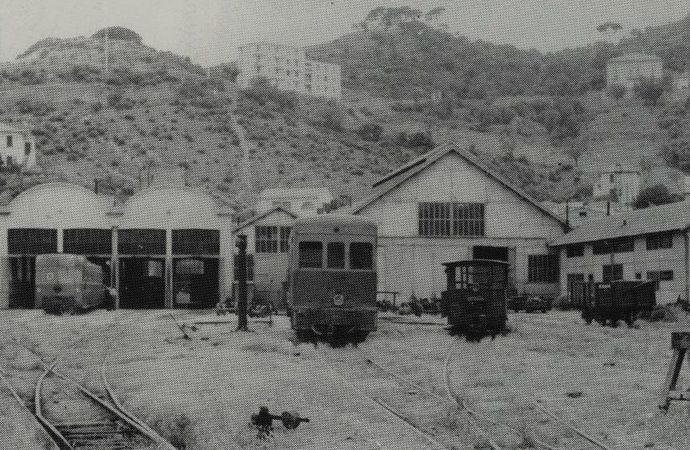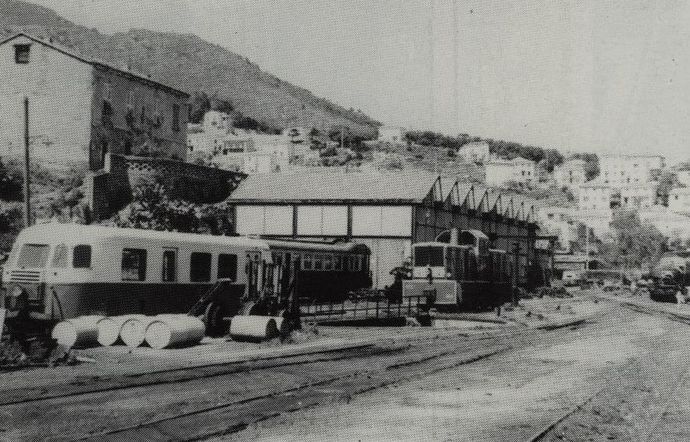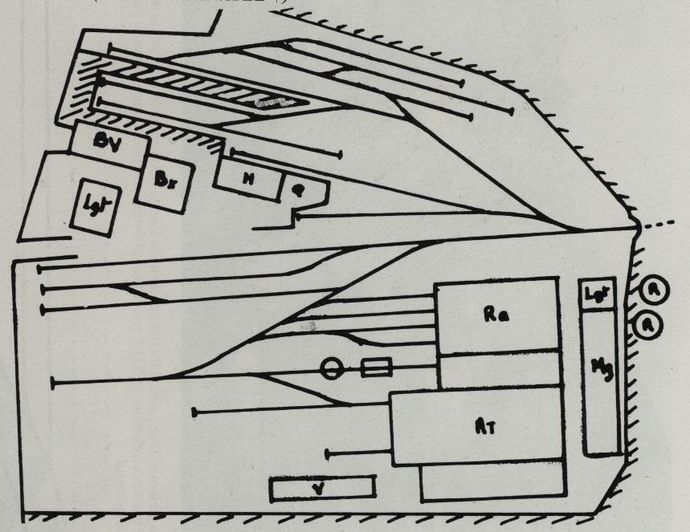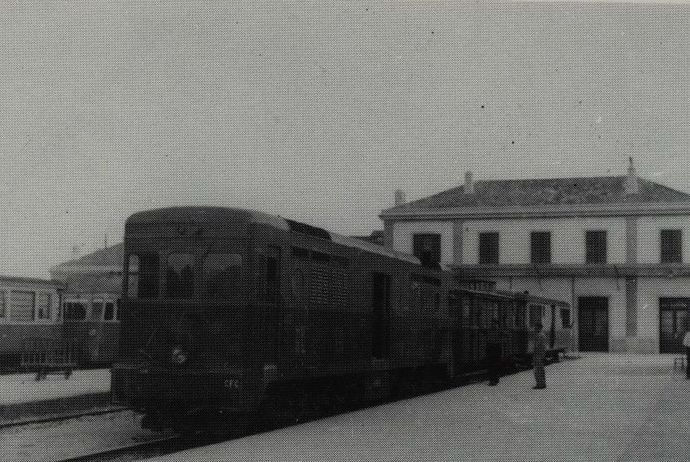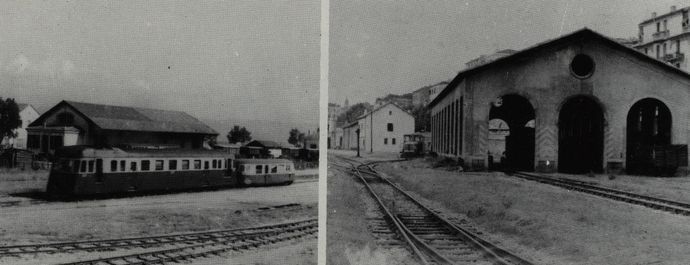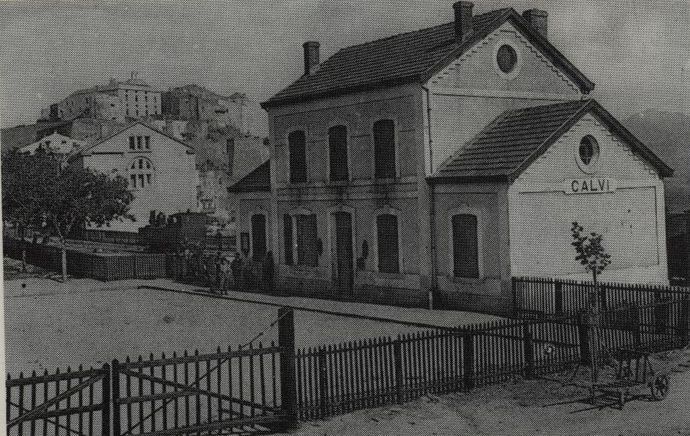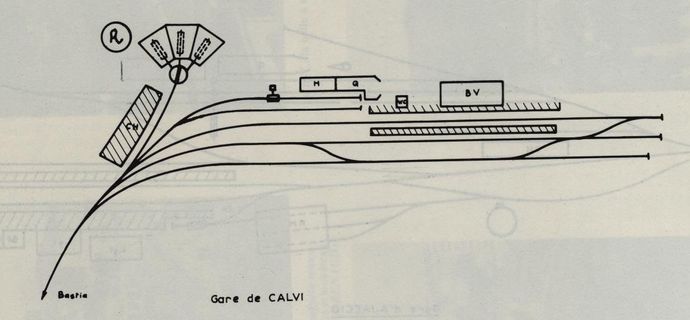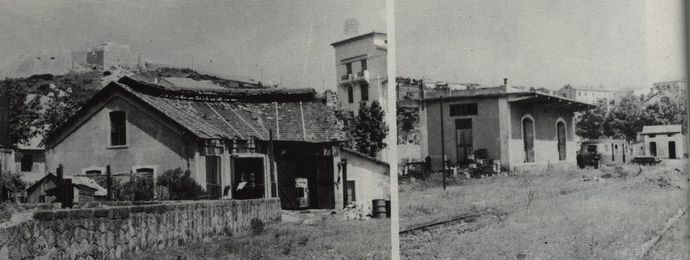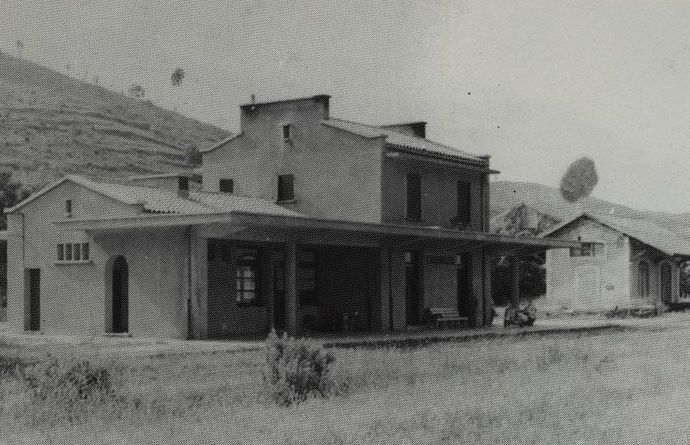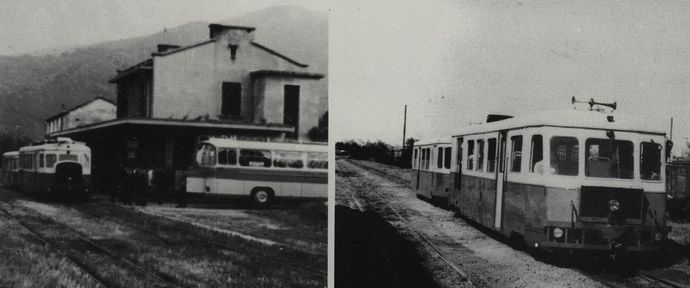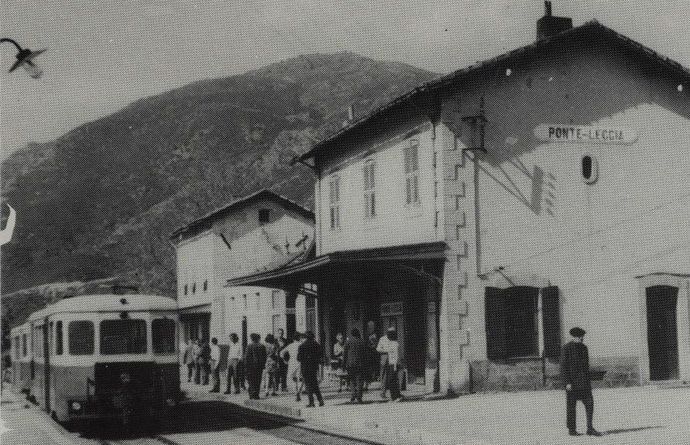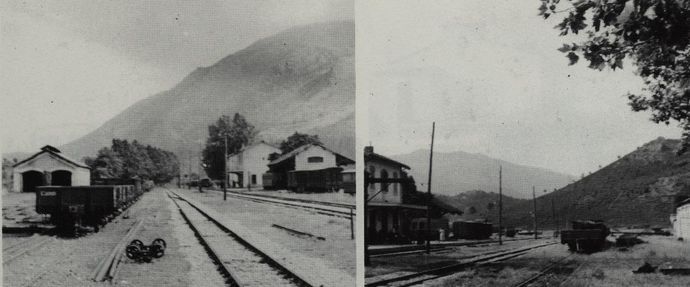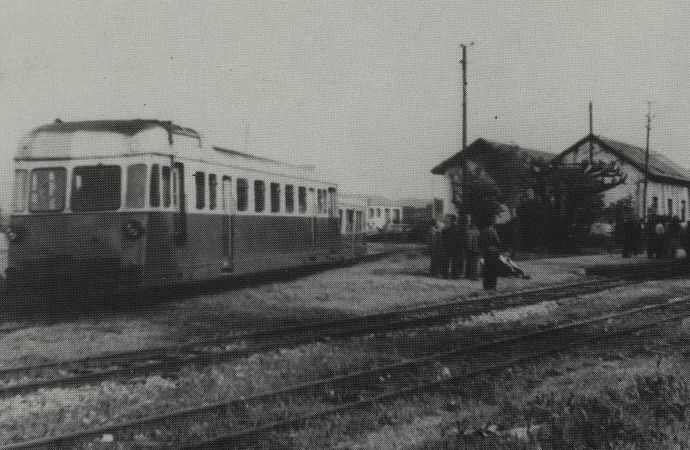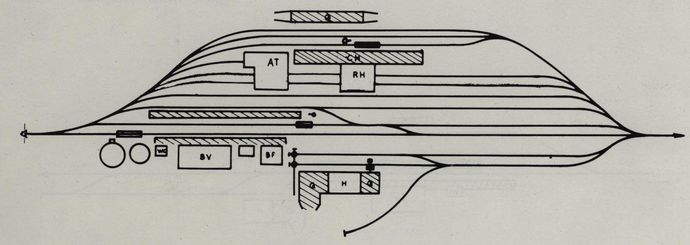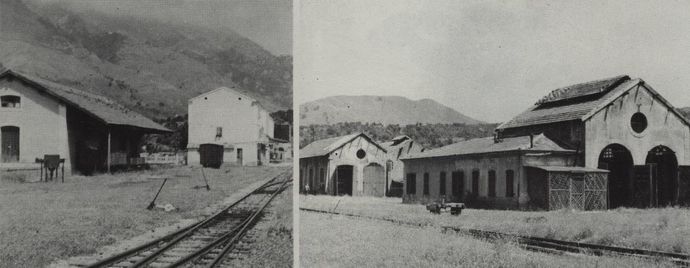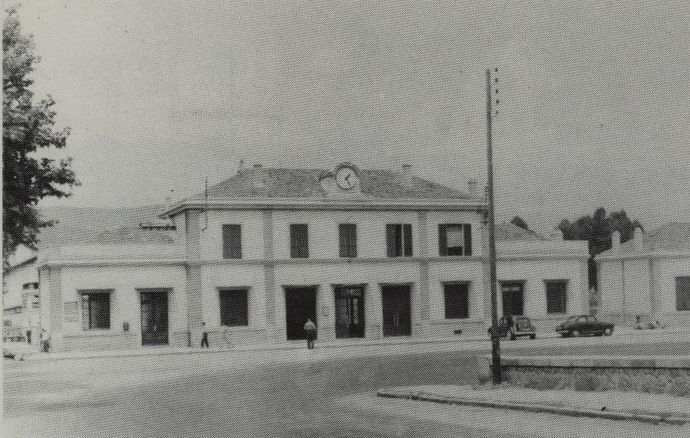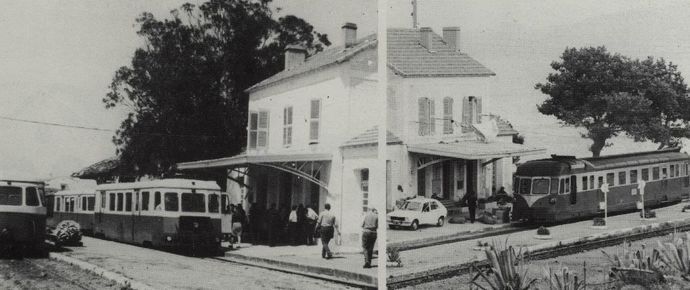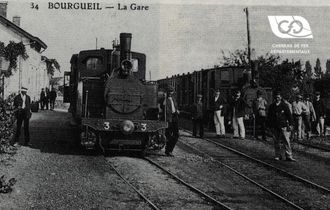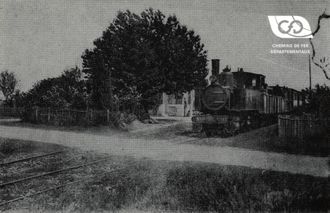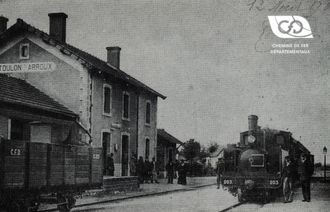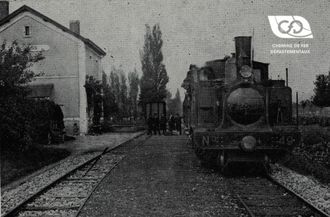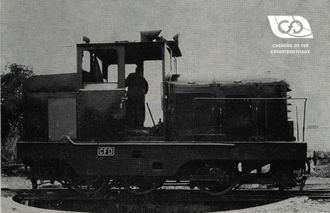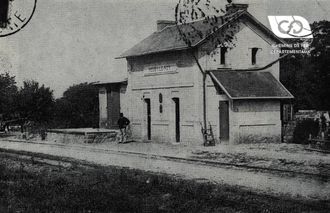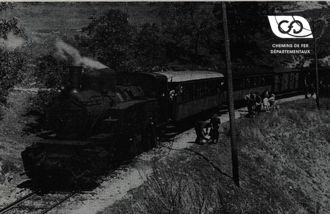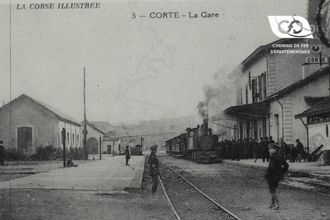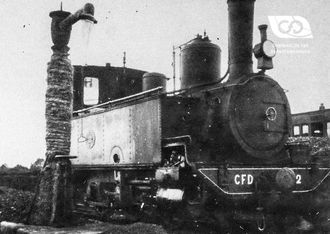Bastia's central train station
It is the most important station in the network. It contains the workshops and depots for locomotives and railcars. It is in this centre that has carried out, since the birth of the network, all the major repair and maintenance work on the rolling stock. Over the years, the layout of the tracks has been modified. We give the plan of it at the time of 1937 (apogee of the network). At present, this station has undergone a profound modification, with the workshops being transferred to Casamozza and the "passenger" building moved to the site of the old coach houses.
The connection to the port, initially branched on the original side of the station, had been given an additional direct track on the tunnel side, thus forming a vast American triangle allowing the turning of the long railcars on the one hand, and direct access to the port for trains coming from Ajaccio on the other.
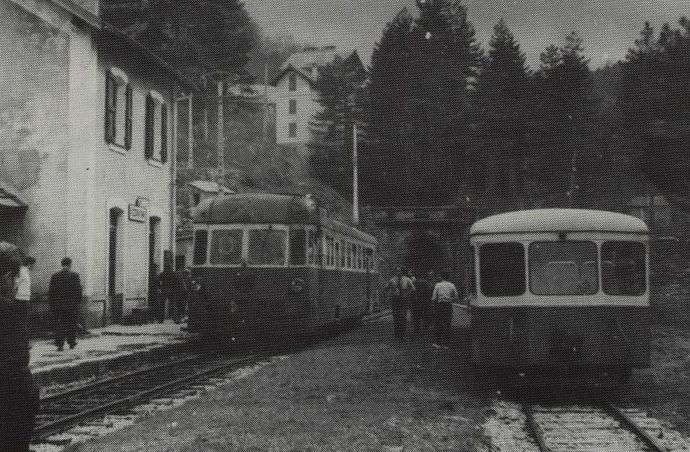
At the present time, this connection has been removed and the majority of the workshop buildings have been destroyed, as well as the old goods hall and the B.V. The latter, after having undergone a temporary solution, has once again been built jointly with the offices of the Local Directorate, whose old building has also been demolished to enable the new Prefecture of Bastia to be set up.
A new goods hall was built and only the railcar workshops were retained for routine maintenance of the equipment.
A three-lane bundle at the platform was created for passenger service, as well as a set of sidings for freight vehicles.
